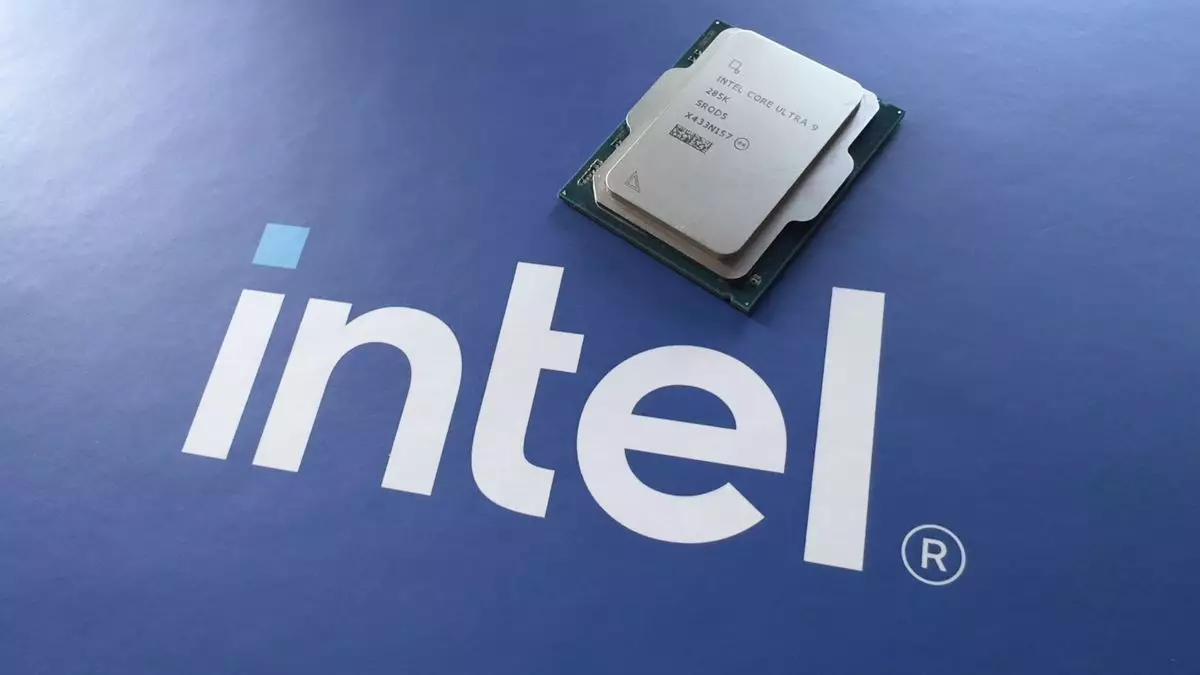Intel’s recent launch of the Arrow Lake Core Ultra 200S processor has not gone as smoothly as anticipated. While enthusiasts and reviewers had high expectations based on Intel’s promotional material, the reality of the processor’s performance has sparked both disappointment and concern within the tech community. As the Vice President and general manager of Client AI and Technical Marketing, Robert Hallock, shared insights during a conversation with HotHardware, it has become evident that the performance discrepancies have been more pronounced than initially imagined.
The discrepancies in Arrow Lake’s performance raise questions about the effectiveness of Intel’s internal testing process. Hallock acknowledged the existence of multiple issues at both the OS and BIOS levels, hinting at a need for software updates to rectify the shortcomings observed in the processor’s performance. While he offered some transparency about these challenges, the general sentiment among reviewers is that the expected performance enhancements may not entirely bridge the gap with competing architectures, especially concerning gaming performance.
An examination of Intel’s early tests and benchmarks reveals a more complex situation. The numbers presented in reviews did not align with Intel’s internal expectations, and this scenario puts the company in a precarious position as they navigate the process of addressing these performance concerns. It’s noteworthy that Intel claimed the review testers’ figures were in line with their internal tests, albeit falling a bit short. This misalignment calls into question the assumption that forthcoming updates will jaw-droppingly change the Arrow Lake trajectory, particularly when it comes to gaming.
In an effort to explore the performance limits of the Core Ultra 200S, various overclocking strategies were employed. Despite persistent efforts to tweak clock speeds and RAM configurations, performance improvements were marginal. The most optimal configuration yielded just an 11% increase in cache ring clock and only a 2% improvement in mean frame rates in most gaming scenarios. Interestingly, while some gaming titles like Cyberpunk 2077 showed a slight uptick in performance, others such as Total War: Warhammer 3 demonstrated a drop in performance metrics, highlighting the varied nature of gaming experiences on the new chip.
These modest gains also come at the cost of a notable increase in power consumption, ratcheting up concerns about efficiency. Having a high-performing CPU typically means high power usage, but the Arrow Lake processors offer a somewhat better power profile compared to previous Raptor Lake architectures—an aspect that could be seen as a silver lining amidst the current setbacks.
Moreover, utilizing Intel’s Application Optimization tool (APO) to improve thread management in its hybrid architecture yielded mixed results. Although some games saw slight performance bumps, the overall narrative remains that these enhancements do not sufficiently elevate Arrow Lake’s standing against competitive offerings from AMD, specifically in gaming contexts.
Looking ahead, Intel’s promise of BIOS and Windows fixes presents a flicker of hope for prospective consumers and gamers. As the potential exists for significant firmware enhancements, there may be a pathway to resolving the identified performance bottlenecks. This is particularly critical given the mixed performance results observed with varying motherboards, suggesting that hardware compatibility may also play a crucial role in realizing the full potential of Arrow Lake.
Nevertheless, the structural limitations that underpin its architecture should not be overlooked. Comparisons with AMD’s Ryzen 3000 series reveal a fundamental design mismatch in how the memory controller interfaces with CPU cores, potentially contributing to latency issues that could plague gaming performance. Unlike AMD, which has advanced through multiple generations to optimize these parameters, Intel appears to face a steeper uphill battle in catching up.
While Arrow Lake has several advantages, especially concerning power consumption and performance in content creation, its gaming capabilities remain less than stellar—particularly with formidable competitors like AMD’s Zen 5 architecture making significant headway. Until Intel can effectively address the identified issues and demonstrate that their fixes enhance gaming experience substantially, they risk losing market share to rivals who are already excelling in this arena.
Intel’s future in the gaming CPU segment hinges on their ability to navigate the dual challenge of rectifying current deficiencies in the Arrow Lake Core Ultra 200S and ensuring that the architecture is robust enough to compete with the likes of AMD. The company undoubtedly has the resources to make necessary adjustments, but time will tell whether these efforts can significantly move the needle in their favor. The path forward requires not only overcoming current hurdles but also a strategic re-evaluation of how Intel can position itself as a leader in the CPU market for gaming enthusiasts.

